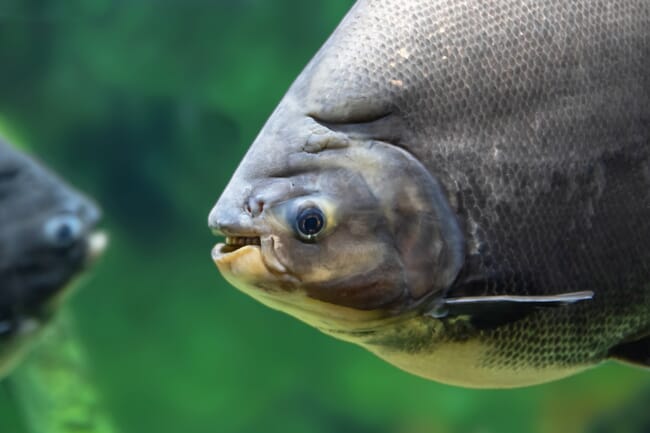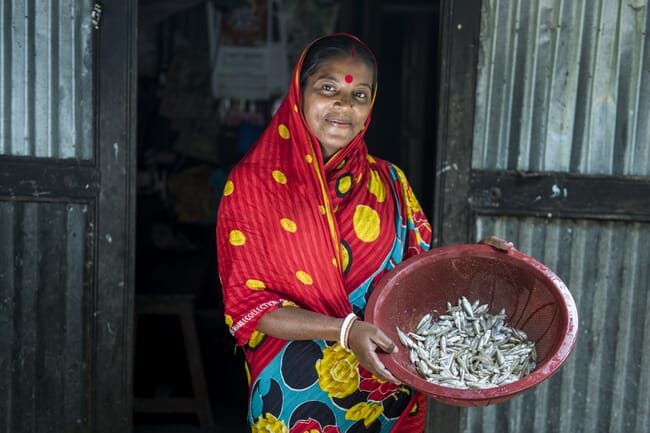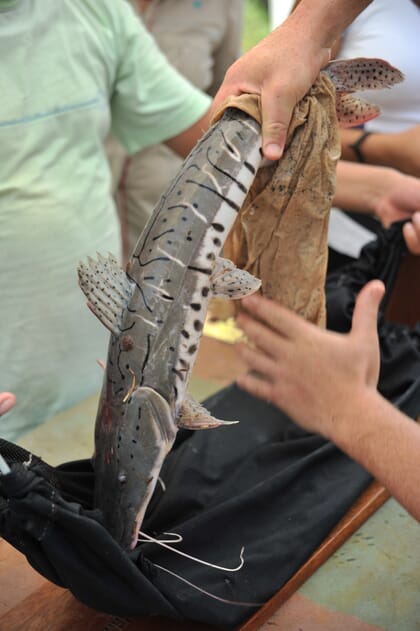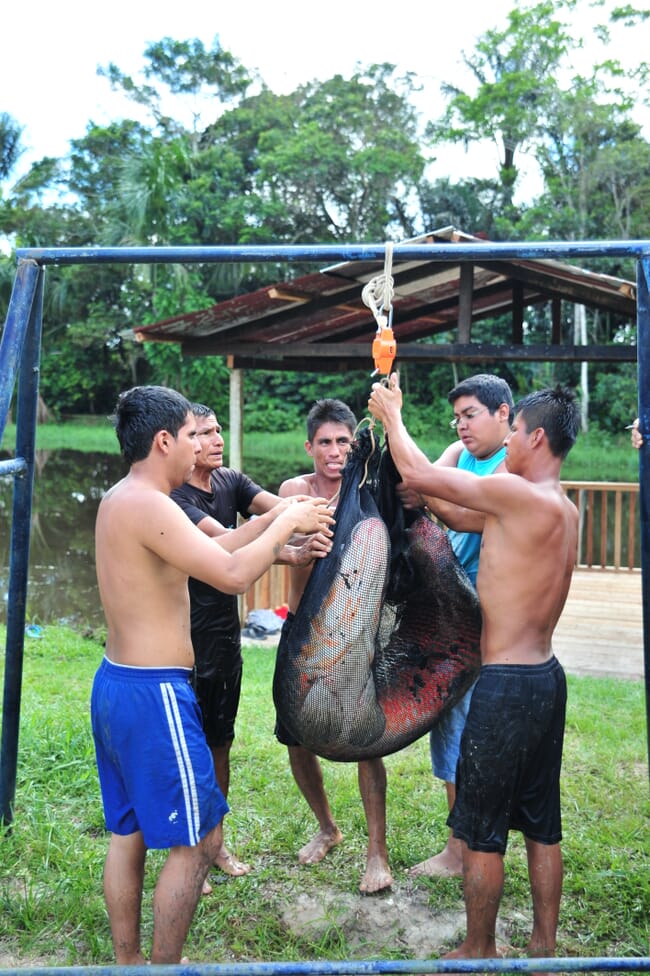As Dr Theresa Mundita Lim, head of the ASEAN Centre for Biodiversity, wisely pointed out in last month’s article ‘Is the aquaculture of invasive and non-native species worth the risk?’, “Invasive species prevent many countries from fully realising the benefit of their native biological resources.” The opposite is just as true – many countries are not taking full advantage of their native and indigenous biological resources.

It is clear that the long-term effect of escapees and the deliberate introduction of non-native species in natural ecosystems are seldom positive. However, the long-term effects of invasive fish on the livelihoods of people who depend on local fish stocks for sustenance, tourism and other indirect contributions remain largely unclear. One of the few comprehensive studies on this topic indicates that in the United States alone, exotic fish species cause economic losses of up to almost $5.4 billion annually. Investigations in other regions paint similar pictures.
In such publications, most of the attention is given to the negative aspects of invasive fish, but the positive benefits provided by native species are rarely acknowledged or discussed.
As Dr Bill Collis, former South Asia director of WorldFish, said in a workshop on the topic: “In the 1990s, small indigenous fish species were valued at 15 to 20 taka [ie less than 20p] per kilogramme in Bangladesh. They are now valued at double the price of carp. Selling at 250 to 300 taka [around £2.75] per kilo, they have become a rich man’s food.”
In fact, there is an the enormous global potential of farming and harvesting native fish species to sustain livelihoods and contribute to food security worldwide. Below, we focus on several case studies from different regions, and aim to provide new insights for investors, policymakers and other stakeholders to help reframe their perspective on aquaculture species selection.
Lessons from China: more fish, less money
At first, one might think the introduction of more fish species in rivers and lakes would result in higher harvests, and more income for local fishers. The situation, however, is more complicated. One of the few studies available on this topic investigated how invasive species have changed the livelihoods of local fishers in China’s Pearl River Delta.
Xia et al (2019) explain how 23 exotic fish species have established themselves in this important river delta – including tilapia, North African catfish and several types of carp. These species all have commercial value and although they indeed have become an important part of the catch of local fishers, their impacts on the livelihood of these fishers is quite complex.
Xia and his team investigated the correlation between the abundance of these exotic species and the income of fishers. The results indicated that when the proportion of exotic species increased by one percent, the average income of individual fishers decreased by ¥20.19 (about £2.20) per month. Given that average monthly incomes in rural China are in the £200-300 range and many vessels catch considerably more than one percent of exotic species, this can have a considerable impact on their livelihoods. The researchers also determined that although these exotic species did enhance fishing production, with locals catching more fish, their overall income declined because the total value of their catches plummeted. Local fishers were catching fewer, better-priced native fish, which seem to be preferred by local customers. Worryingly, the study also describes how, in order to compensate for this, fishers increase their fishing effort, possibly further increasing fishing pressure on native species.

© WorldFish
Lessons from India: small natives key to food security
Small native fish are often the first to be outcompeted or eaten to extinction by invasive species. These small natives play a surprisingly large role in securing access to animal protein and micronutrients in rural communities, amply shown in an example from India.
For example, research by the International Collective in Support of Fishworkers (ICSF) in collaboration with Inland Fisheries Society of India (IFSI) shows that across India, small native fish species are vital to the livelihoods and food security of lower classes, because access to such species is caste-free and open to everyone, even in most privately owned rice paddies.
Their workshop and study also outlines how these native species are the key source of micro-nutrients such as calcium, zinc, iron and fatty acids in rural communities and poor castes within communities. As their study notes: “Among traditional communities, indigenous knowledge about the health benefits of such species exists. For example, mola (Amblypharyngodon mola), commonly found in eastern and northeast India, is often included in the diets of pregnant and lactating mothers, for its nutritive value.”
Another notable advantage pointed out by Mr Vivekanandan during the workshop organised by IFSI is that the catching, culture, processing and selling of small native fish species is almost exclusively done by women, giving them the opportunity to independently sustain themselves. This potential to empower women should also be promoted for the small-scale culture of native species.
Retaining diversity
As these examples indicate, there seems to be a plethora of benefits from utilising wild native species. The same rings true for aquaculture. Native species are best suited to local climates, giving them better chances to survive adverse weather conditions and events like storms and droughts. Local species and varieties are also better adapted to resist local diseases and parasites. Native species are often in high local demand as they are considered local delicacies, fetching higher prices for farmers.

© Guillain Estivals
Globally, an important aspect of embracing local species and varieties is the conservation of genetic diversity. The aquaculture sector is currently still very diverse, with over 600 species farmed. But as the sector develops and continues to professionalise, the number of farmed species, plus the genetic diversity within these farmed species, is predicted to dwindle quickly, because the industry has a tendency to bank on a few animals which exhibit desirable traits for large-scale commercial aquaculture. Similar to what has happened in the livestock sector, where now only a handful of species continue to be farmed, with many animal types and local varieties now extinct and lost forever.
Reduced biodiversity also brings enormous long-term risk, especially with regards to safeguarding global food security for humanity. Take, for example, the current swine fever outbreak, where the World Organization for Animal Health(OIE) expects25 percent of all pigs worldwide to succumb to this disease, causing potential food shortages, with prices already soaring in China. Prioritising the culture of native species while protecting and preserving local varieties can definitely be a key solution to continue safeguarding food security for our growing population.
Reframing species focus
Some researchers and countries have already made this realisation and are now giving a higher priority to the culture of native species. However, several bottlenecks remain. The United Nations’ Food and Agriculture Organization (FAO) has identifieda number of hurdles to the culture of native species throughout South-East Asia, including the limited availability of domesticated broodstock, genetic side-effects due to domestication and a relative lack of expertise and technologies in breeding and raising native species.
A promising initiative for the region is the Aquaculture of Indigenous Mekong Species (AIMS), a network between four countries which is developing nine indigenous species for aquaculture to reduce the region’s reliance on exotics and potentially invasive species. The project has a strong environmental focus and is concentrating on genetics and broodstock management, on the environmental management of indigenous fish farming systems and on analysing and maximising the economic benefits of indigenous-fish aquaculture to preserve genetic diversity.
Brazil heads the revolution
The sole country which has taken this a step further is Brazil. In the 1980s, Brazil had little to no aquaculture production. Its policymakers tried to kick-start fish farming by importing non-native shrimp and tilapia into the country. The culture of these species took off and tilapia remains the country’s most farmed aquatic species. But fish farmers and researchers eventually started eyeing the country’s native species as well.

© Guillain Estivals
As Professor Ulrich Saint-Paul from the Leibniz Centre for Tropical Marine Research (ZMT) points out, in 1976 the Brazilians already recognised the danger of introducing exotic and potentially invasive species to the country’s vast array of native species and freshwater resources. Brazilian policymakers simultaneously acknowledged that its indigenous species might have significant culture potential, and they tasked the Centro Regional Latinoamericano de Acuicultura (CERLA, later renamed to Sociedad Latinoamericana de Acuicultura) to start experimenting with different local species.
Part of greater Amazonia, Brazil holds 12 percent of the world’s total freshwater volume, contained in areas ranging from the Amazon River basin in the north to the swamps of the Pantanal to the south. Together, these freshwater areas host an amazing variety of unique fish species. South America leads the charts in terms of fish diversity, with current estimates standing at over 9,100 freshwater and marine species. This accounts for 27 percent of all fish species recorded globally – a huge and largely untapped resource.
Prof Saint-Paul was among the pioneers in this field, as he published the first high-level document on the culture potential of native species in South America – entitled Potential for aquaculture of South American freshwater fishes: a review – in 1986. Despite his push, and despite the initial interest of the Brazilian government, Brazil’s commercial aquaculture operations continued to exclusively produce exotic species until the mid-1990s, as pointed out in the research by Pincinato and Asche.
As these two authors further note, by the end of the same decade, Brazil’s focus started to change and serious effort was finally made to culture native species. They explain that in the same period, the performance of farming operations that focused on shrimp and exotic carp species decreased due to lower survival rates. Farms focusing on native species and tilapia on the other hand, performed very strongly and they argue that these species are better-suited to local ecosystems and are in higher demand in local markets.
As Prof Saint-Paul points out: “The Brazilian preference for culturing native fish species is a question of local customs.” Consequently, almost all of the native fish species produced locally are also consumed locally. These shorter supply chains, with fewer middlemen, result in higher returns for farmers, with fewer risks compared to distant overseas markets.
The dominant native species currently being cultured are tambaquí (Colossoma macropomum), tambacu (a hybrid from crossing C. macropomum and Piaractus mesopotamicus) and the arapaima (Arapaima gigas). The first two are by far the most popular. An important reason for this popularity is their mainly vegetarian diet. In the wild, these species adapt themselves to a variety of habitats and feed mostly on plants, nuts and seeds. This versatility makes them a perfect candidate for aquaculture. This character trait also makes their culture more sustainable, as fewer resources are needed to feed them compared to farming carnivorous species. The culture of other native species is under development and several other species like the surubim (Pseudoplatystoma spp.) are showing significant potential as pointed out in one of the recent publications (2017) by Saint-Paul.
Over the past 20 years, the culture of native species developed extremely rapidly in Brazil, and now a little over 40 percent of the country’s total aquaculture production volume comes from native species, as shown below (Saint-Paul, 2017).
Farming these native fish has made Brazil the world’s 12th biggest aquaculture producer with just over half a million tonnes of production in 2016. Interestingly, Brazil also continues to be the largest importer of fishery and aquaculture products in South America, showing the enormous potential to increase local aquaculture production further. The Organisation for Economic Co-operation and Development (OECD) reported in 2015 that Brazil’s aquaculture production is expected to increase by a whopping 68 percent by 2021.
In some neighbouring South American countries, the culture and production of native fish species is also starting to overtake the production of exotic species. Who knows what the future will hold for other countries that decide to follow in the footsteps of Brazil and empower their local farmers by focusing on natives?



